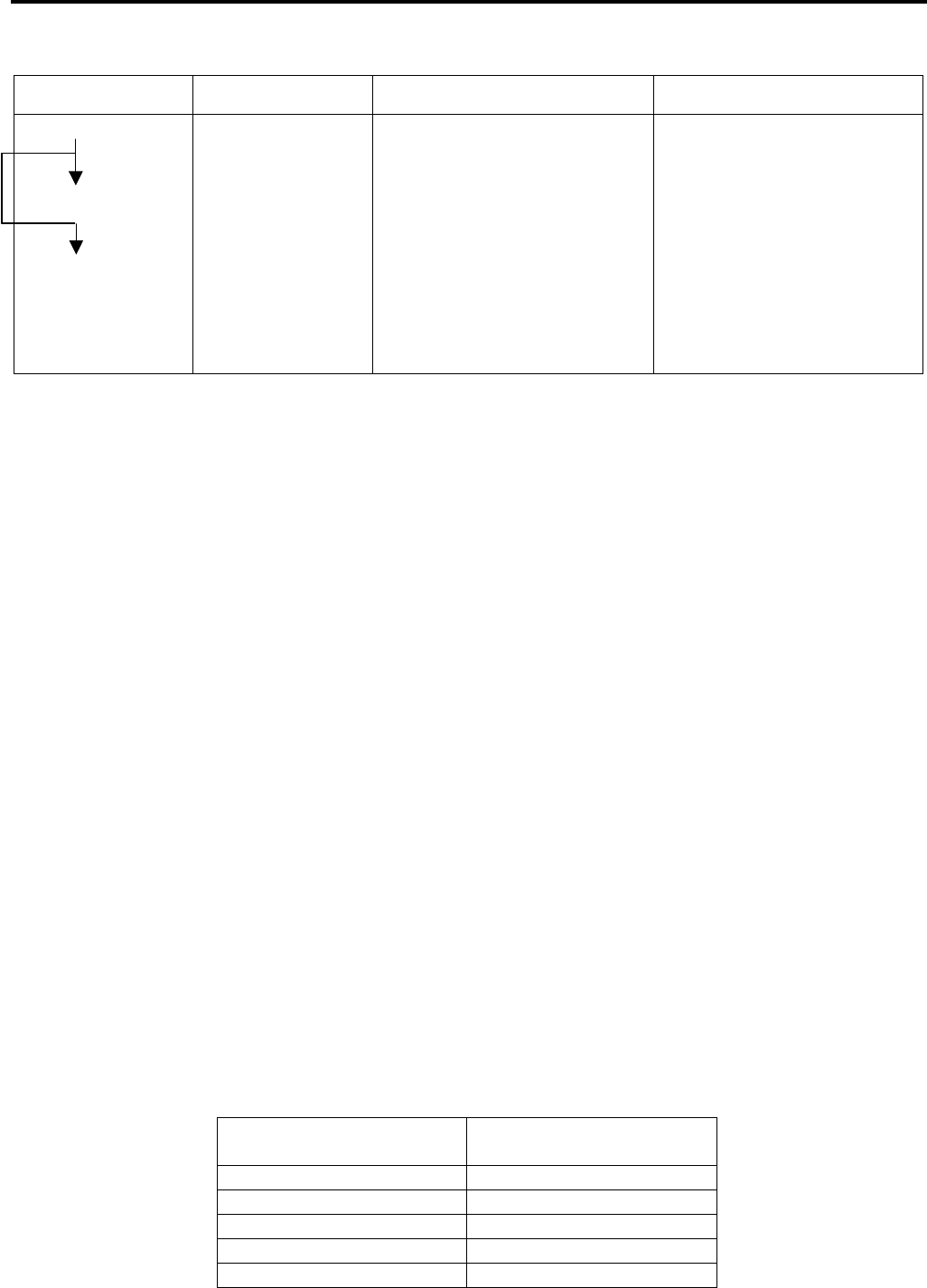Operation Manual
Table Of Contents
- Safety Summary
- OPERATOR’S GUIDE
- TO OUR CUSTOMERS
- ACCESSORIES
- APPEARANCE AND NOMENCLATURE
- MODE LOCK AND MODE SELECTOR KEYS
- DISPLAY
- OUTLINE OF PREPARATION PROCEDURE BEFORE
- CASHIER SIGNING OR CASHIER KEY OPERATIONS
- KEYBOARD LAYOUT
- FUNCTIONS OF EACH KEY
- DAILY OPERATION FLOW
- REGISTERING PROCEDURE AND PRINT FORMAT
- No-Sale
- Department Entry
- PLU Entry (Manual PLU Code Entry)
- PLU Price Shift Entry
- Repeat Entry
- Quantity Extension (Multiplication) for DEPTs/PLUs
- Single-Item Department or Single-Item PLU Entry
- Returned Merchandise
- Amount Discount
- Percent Discount, Percent Charge
- Store Coupon
- Vendor Coupon
- Item Correct
- Void
- All Void
- Non-Add Number Print
- Listing Capacity Open
- Tax Status Modification
- Subtotal (Sale Total Pre-taxed) Read
- VAT Calculation and Print (VAT = Value Added Tax)
- VAT Print
- Add-on Tax Calculation and Print
- Tax Exemption (for Add-on Tax Feature)
- VAT Exemption (for VAT Feature)
- Finalizing a Sale
- Multi-Tendering
- Split Tendering
- Cheque Cashing (No-sale cashing of a non-cash media)
- Special Rounding
- Denmark Rounding
- Sale Paid in Foreign Currencies
- No-Sale Exchange from Foreign Currency to Domestic Currency
- No-Sale Exchange from Domestic Currency to Foreign Currency
- Paid-Out
- Received-on-Account
- Salesperson Entry (Salesperson Sign-ON)
- Receipt-Issue/Non-Issue Selection
- Receipt Post-Issue
- Charge Posting: Previous Balance Manual Entry Type
- Journal Print (Thailand Specification)
- VAT Total Display
- Consignment Print
- Validation Print
- Remote Slip Printer (hardware option) Operation
- When a Power Failure Occurs...
- JOURNAL AND RECEIPT PAPER-END DETECTOR
- PRINTER HEAD OPEN DETECTOR
- REMOTE SLIP PRINTER MOTOR LOCK DETECTOR
- GENERAL MAINTENANCE
- SPECIFICATIONS
- MANAGER’S GUIDE
- OPERATIONS IN “MGR” MODE
- OPERATIONS IN “ - ” MODE
- READ (X) AND RESET (Z) REPORTS
- PROGRAMMING OPERATIONS
- Instructions for Programming
- Character Entries
- Condition Required for Programming Operations
- SET Mode Menu
- Time Setting or Adjustment
- Date Setting or Adjustment
- Commercial Message Programming
- Footer Message Programming
- Store Name Message Programming
- Cashier Name and Status Programming
- Department Name Programming
- Department Group Name Programming
- PLU Name Programming
- Salesperson Name Programming
- Department Table Programming
- PLU Table Programming
- Department Preset Price Setting or Changing
- PLU Preset Price Setting or Changing
- %+ and %- Preset Rate Setting
- Foreign Currency Exchange Rate Setting
- VERIFICATION OF PROGRAMMED DATA

11. REGISTERING PROCEDURE AND PRINT FORMAT EO1-11154
11.30 Denmark Rounding
11-18
Without [ST] Key Operation:
Contents Key Operation Display Print
Item Entry
Cash Total
Cash Tender
123 [DP1]
[AT/TL]
200
[AT/TL]
DP01
01 1,23
CASH
1,25
2,00
CHANGE
0,75
DP1 1,23
SUBTL 1,23
CASH
1,25
SUBTL 1,23
TOTAL
1,25
CATEND 2,00
CHANGE 0,75
NOTE: Short-tendering can also be operated with or without a [ST] key depression. The balance due will be
calculated on the basis of the post-rounded sale total (or subtotal) amount. Thus, the post-rounded sale
total is determined on the first media entry (whether it is Totaling, Over-tendering, or Short-tendering
using any media key).
11.30 Denmark Rounding
1) Denmark Rounding feature
• Sale total finalized by the [AT/TL] key is rounded. (The fraction rounding method is fixed.)
• The amount displayed at the [ST] key depression is not rounded.
• Short-tendered amount to be displayed is not rounded.
2) Sale finalization
• At a total amount entry
When the [AT/TL] key is depressed, the post-rounded total amount (or short-tendered amount after
rounding) is finalized. When a sale is finalized by the media key excepting the [AT/TL] key, none of
rounding process is performed.
• At a tendered amount entry
When the [AT/TL] key is depressed, one of three processes below is performed according to the tendered
amount.
a) Tendered amount ≥ Post-rounded total amount (or short-tendered amount during a short-tendered
condition
An over-tendering is performed with the post-rounded total amount (or short-tendered amount).
b) Tendered amount < Post-rounded total amount (or short-tendered amount during a short-tendered
condition)
A short-tendering is performed with the pre-rounded total amount (or short-tendered amount).
c) Pre-rounded total amount ≤ Tendered amount < Post-rounded total amount
A tendering operation satisfying this condition is not possible.
Operation Example) If rounding method table below is programmed
Pre-rounded value of the
least effective digit
Post-rounded value
0 to 12 0
13 to 37 25
38 to 62 50
63 to 87 75
88 to 100 100










